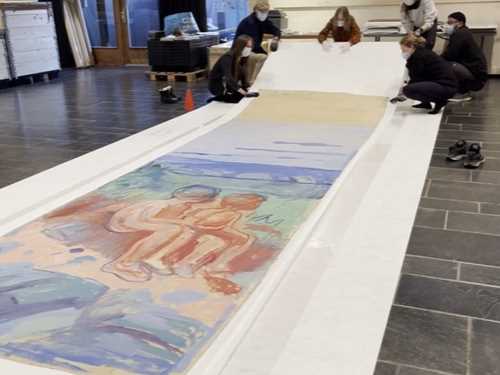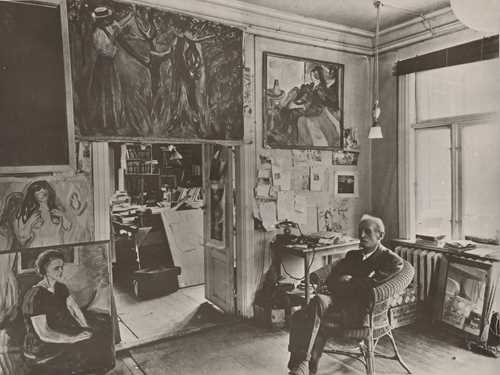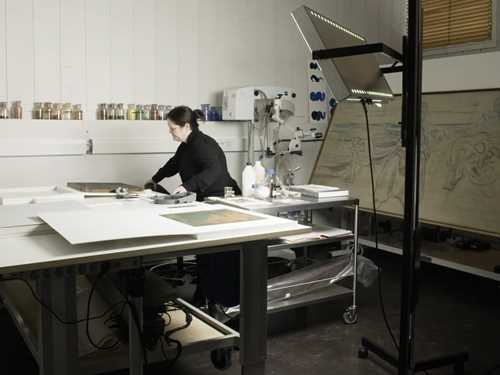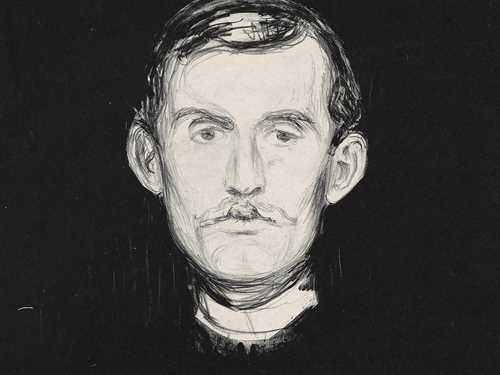Edvard Munch's Alpha and Omega
Did you know... that Munch made his own bizarre creation story?
Edvard Munch's Alpha and Omega folder is a collection of graphics that illustrate a personal and bizarre version of a creation story. The folder consists of 18 main images, two introductory vignettes, a title page and an illustrated table of contents printed as lithographs. In addition, there is a prose poem that accompanies the pictures.
The story is about the first two people on a desert island - Alpha and Omega. They live in harmony until a large cloud casts a shadow over the island - Alfa discovers Omega lying with a huge snake on top of her, staring into its eyes. Alpha kills the snake in anger and jealousy, but this does not stop Omega. She initiates erotic relationships with all the island's animals, until she gets bored and flees on the back of a fallow deer.
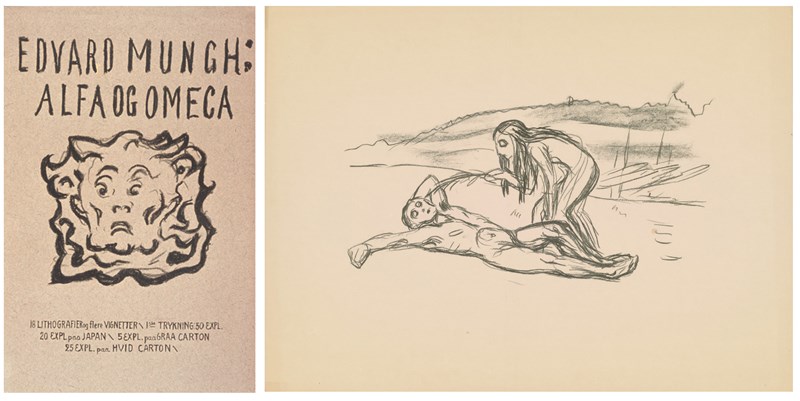
Left: Edvard Munch: Alfa og Omega. Litografi, 1908-09. Foto © Munchmuseet. Right: Edvard Munch: Alpha and Omega. Lithograph, 1908-09. Photo © Munchmuseet
Alfa thinks he is left alone - but one day Omega's children come to him. A new family has grown up on the island, and they call him their father. There are little pigs, snakes, monkeys, predators and other human bastards. Alpha despairs: “He ran along the Sea; The sky and the sea were stained with blood; he heard screams in the air and held his ears; The earth, the sky, and the sea trembled, and he felt great anxiety. ”
When Omega returns one day, Alfa kills her. As he sits and watches her body, he is attacked from behind by all her children and the island's animals that tear him to death.
The text in the Alpha and Omega folder was printed in both Norwegian and French, and is one of few examples of Munch's literary ambitions manifesting itself in a published text. The folder was printed by the Danish Reproduction Institute and is dated 1908–1909. The title page states that the first printing consisted of 50 copies, but Munch researcher Gerd Woll claims in an article that the folder was probably printed in between 80 and 90 copies in total.
Based on an article by Sivert Thue.
Join us behind the scenes and get an insight into how our conservators work to preserve our fragile inheritance from Edvard Munch.
